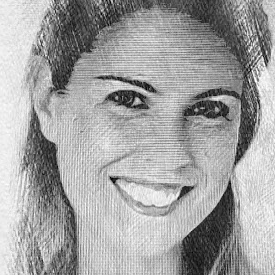
He blows up a balloon, lets go of the spout and says, “That’s how a rocket actually works!” Today, none other than Dutch astronaut André Kuipers shows the children how space technology works. In a full auditorium in theatre Het Speelhuis in Helmond, they listen with open mouths to the story of Kuipers during the “Technique Pact College tour”. It’s all about making children enthusiastic about (space) technology. And in the meantime, it’s a prelude for the Dutch Technology Week, held from 20 to 25 May.
The Technique Pact College tour fits in with the educational ambitions of the Brainport Eindhoven region. It is intended to continue to stimulate children’s talent development, to make them resilient and to prepare them optimally for the society and labour market of the future. The core themes of education in Brainport are technology, entrepreneurship, creativity and world citizenship. We had a chat with André Kuipers about his story for the children.
“Research has shown that if children ate age 10 or 11 are enthusiastic and have fun with it, they will start working on it sooner or later,” says Kuipers. “And what’s important: I want to show them that technology is fun. It is a part of their lives and I portray it in simple ways. I ask them to rub their hands to experience how heat is created. I let them hang with their heads down, so that they get a ‘full’ feeling in their heads, just like it feels in space. On stage, Kuipers shows how the spine and vertebrae work when you’re sitting in the space, with the help of sandwich drums and sponges.
‘Science and technology is fun’
“Things get much clearer that way,” says the astronaut. “We try to include all these types of technology in this tour, for example, because it comes from their own environment. And of course it has to be an adventure as well, because then you pick it up very quickly. You have all their attention with the story from space, which is a totally different world for them. When you incorporate these simple examples, you hope to keep the interest going. I want children to see that science and technology are fun. It’s not something just for nerds!”
This part of College tour was held in theatre Het Speelhuis, but Kuipers also does this at colleges and universities. “In this way, children are brought into a different world at a very early stage, namely an academic environment. This is a learning environment, a technical atmosphere. They get to see the meaning of technology in a fun way for a whole day. And then it’s up to the schools and teachers to continue with that. I do understand that pupils ‘have to’ do a lot of things. They need to receive nature and music education, learn to swim, and so on. That’s why it’s important to find a way to incorporate technology into the educational programme. It is important that teachers are also working on it. That’s how we went to PABOs, because that’s where it has to start. You can put a wonderful technique tour in the classroom, but if the teacher is not interested in it, then it will be difficult. Despite the fact that the children do want it.”
According to Kuipers, more attention to technology is not only in the interests of children, but also in the interests of society. “There is a great shortage of technicians at all levels. From programming to installation and maintenance. Especially at MBO level there is a great shortage, even while there is a need for it. You can have a very good career there. We now focus on this group of children, but of course, you never know what they will do in 10 to 15 years’ time. But we notice the interest and that is already profitable. In this way, we hope to make a contribution.”
Girls and technique
According to Kuipers, the biggest gain would be to hit the girls. “Boys who are interested in technology are heading in that direction anyway. But girls who find technique fascinating may not do anything with it because it is not ‘appropriate’, or because they think it is not possible because it is not meant for girls. That’s very bad, especially if you know that they do have the interest and the capacities. Many girls may be even better than boys in many areas. In my presentations, I show scientific experiments done by girls. I tell the audience that girls can become astronauts just as much as boys and I give more examples. It’s a very important part of the story I tell the children – and I hope it will change. Some day it will!”

